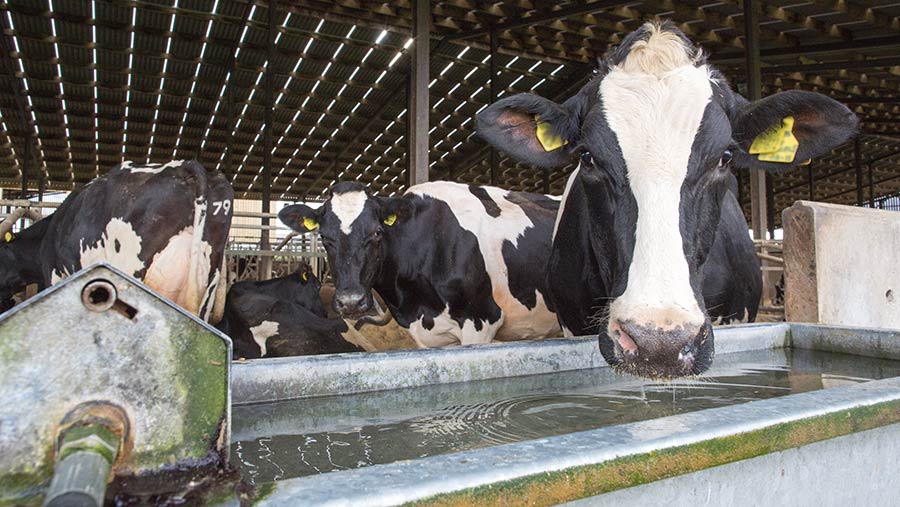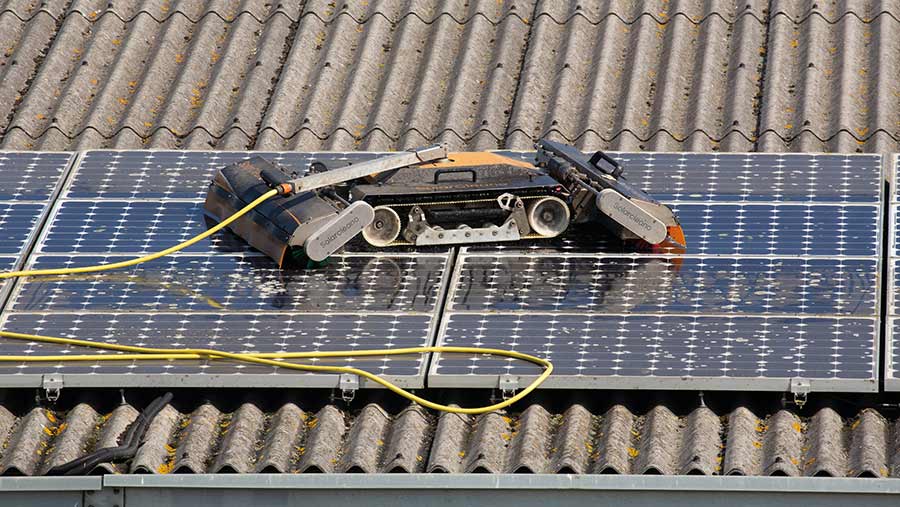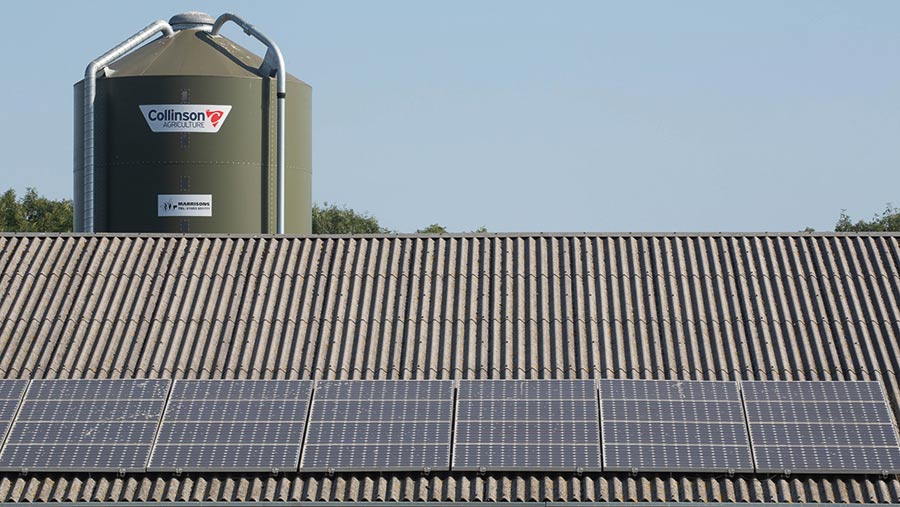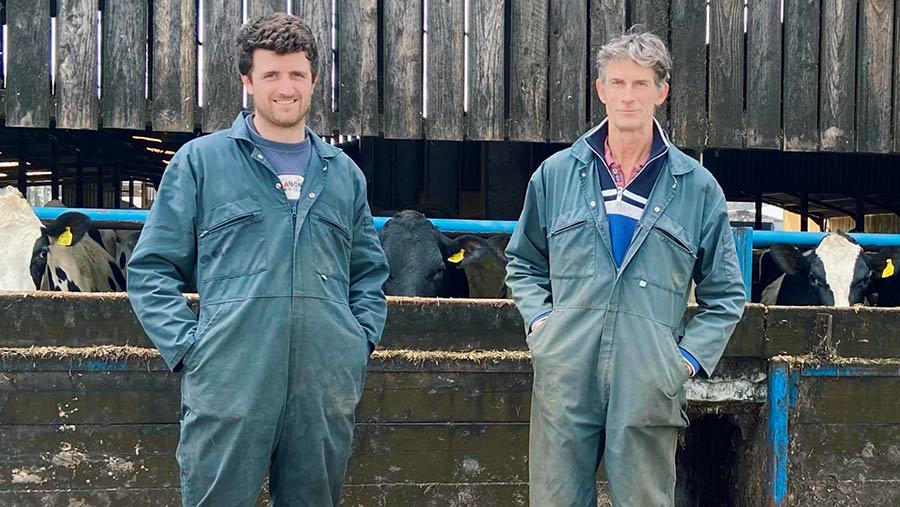4 ways dairy farmers can cut energy costs
 © Tim Scrivener
© Tim Scrivener With energy costs having quadrupled in the past year, it is little surprise that more farmers are carrying out energy audits to identify how they can make savings.
The NFU Energy team runs a service carrying out bespoke energy audits across a range of farm and commercial businesses.
But with dairy businesses being such large users of energy, they have seen a spike in demand from these clients more recently.
See also: 20 ways dairy producers can tackle net zero
“With the dramatic increase in prices, it brings to the table a lot more opportunity. Previously, projects may not have been feasible, but now they are often a no-brainer,” explains Jonathan Sandercock, project engineer at NFU Energy.
“Often, farmers need to be encouraged and shown the numbers behind how much they can save, to give them the confidence that installing equipment is worth the investment,” he adds.
Being more energy-efficient goes hand-in-hand with reducing carbon, and the audits are already being used by some processors to help deliver net-zero targets across their supply chains.
Below, Mr Sandercock explains what the audits entail and what changes can make the biggest difference on dairy units.
1. Install and maintain modern equipment
The three biggest energy consumers on a dairy farm are the vacuum pump, the water-heating system and the milk cooling system.
Vacuum pumps are sized with enough reserve capacity to maintain constant pressure when claws are changed or knocked off.
However, there are long periods of time between milking and cleaning when vacuum requirements are far lower.
In older systems, the pump continues to run at full speed, wasting energy. Modulating pump speed with a variable speed controller can use up to 50% less energy.
Meanwhile, a variable speed milk pump ensures a slower and more consistent flow of warm milk through a plate pre-cooler, exposing it to cold water for longer, maximising the exchange of heat.
This is more effective than a stop-start process, and reduces the load on the refrigeration system.
Heat recovery is another simple system, yet it is typically only used on half of the dairy farms visited by NFU energy.
All three will typically pay for themselves within two to three years.
Variable-speed milk and vacuum pumps need to be fitted with 230V three-phase motors. Farms on single-phase supply can use a phase converter to benefit from the speed controller.
Variable speed controllers require a three-phase electricity supply to work. Farms with a single-phase supply will need to fit a 230V three-phase motor and a phase inverter to the pump’s power supply.
“The inverter must be sized appropriately for the motor it is driving, otherwise you get reliability issues. Buy quality products and ensure the person installing the equipment has experience,” advises Mr Sandercock.
2. ‘Load shift’ power demands

Solar panels should be cleaned regularly © Tim Scrivener
Installing photovoltaic (PV) solar panels is the most popular and cost-effective small-scale solution to generate renewable energy.
However, milking often takes place outside peak solar hours, so dairy farmers need to think creatively to make the most of this cheap energy.
Water heaters and ice-builders can be used as thermal energy stores and are cheaper than using batteries.
Many farmers operate this equipment at night to take advantage of economy-7 tariffs, but biggers savings can be made by charging them during the day using free solar power.
Making sure hot water and ice water systems are large enough for two milkings can also save having to run systems twice daily, maximising solar energy usage.
To maintain the performance of PV solar panels they should be cleaned regularly, too.
3. Use pre-coolers to cut milk temperature and re-use water
Reducing the temperature of the milk before it enters the bulk milk tank can save the refrigeration compressors from using considerable electricity.
Using a pre-cooler milk can reduce the temperature by about 15C before it enters the tank. The heat exchanger can be fed by mains water or water from a borehole.
The water can then be collected for parlour washing or cattle drinking water afterwards to minimise waste.
4. Renewable energy

Energy audits are saving farms big money on electricity costs by reducing electricity requirements © Tim Scrivener
Solar PV is the most suitable investment for most dairy farms, regardless of size, but particularly for housed herds.
“All dairy farms have a large surface area on their barn roofs and you don’t need planning permission unless you are in an area of outstanding natural beauty, so there are low barriers to installation,” explains Mr Sandercock.
It is also scaleable – the larger the herd, generally the more roof space for panels, he adds.
Typically, dairies can save 30-50% in energy costs by installing solar panels, and systems will pay for themselves within five to seven years, depending on the energy agreement.
Case study: Paul Yeatman, Whitefield Farm, Dorset

Oliver and Paul Yeatman © Paul Yeatman
Running a cow and goat dairy simultaneously on the same unit means Paul Yeatman has a substantial demand for electricity, with annual bills exceeding £30,000.
He undertook an NFU energy audit as part of a sustainability review by his milk buyer, Wyke Farms.
Currently, he is on an energy tariff costing 20p/kW, but with this up for renewal, Mr Yeatman was keen to understand how he could reduce electricity consumption.
Currently, he is on an energy tariff costing 20p/kW, but with this up for renewal, Mr Yeatman was keen to understand how he could reduce electricity consumption.
The audit was only undertaken in March, but he has already started replacing older fluorescent lighting with LEDs in both parlours and in the cow cubicles and straw yard where the goats are loose-housed.
Upgrading fluorescent tube lighting with modern LED battens can cut electricity use by 60%.
Parlour savings
The biggest savings can be made in the cow parlour, which runs for two hours longer than the goat parlour and pumps more milk.
A heat recovery system was installed 10 years ago using grant funding. This is already saving 50% of the energy the farm would otherwise use to heat water.
However, NFU Energy estimates Mr Yeatman could save more money by upgrading his ice-builder to provide a larger volume of cold energy storage to cool milk.
The increased storage capacity would provide enough cold water for evening and morning milking.
It would also allow the farm to make better use of its 22kW solar photovoltaic (PV) array by recharging the ice water during the day.
This could be done by making a simple time switch.
One of the quickest wins would be installing variable speed drives to the vacuum pumps in both parlours.
But first, Mr Yeatman needs to look at running a three-phase motor, as he still uses single phase.
“If it works well in the cow parlour, we will do it in the goat parlour, too. The audit has been a worthwhile investment,” he adds.
Farm facts
- Farms 282ha (700 acres)
- Farms in partnership with his father, David, and son, Oliver
- Milks 360 Holstein Friesian cows
- All-year-round calving
- Supplies Wyke Farms
- Yields 8,500 litres at 4.5% butterfat and 3.5% protein
- Milks 800 goats
- Supplies Lactalis
- Part of Fram Farmers, which negotiates electricity contract
- Averages 800 litres a goat a year
- Beef animals reared and sold as stores
- Billy kids sold at one week to rearer
About NFU energy audits
An energy audit entails a farm visit; the auditor then runs a bespoke report offering solutions as to how the farm can make energy savings, including investing in renewables and using energy at times of peak demand.
The team also offers advice on energy contracts to get farmers the best price.
Visit the NFU Energy website for more information and to receive a quote.
